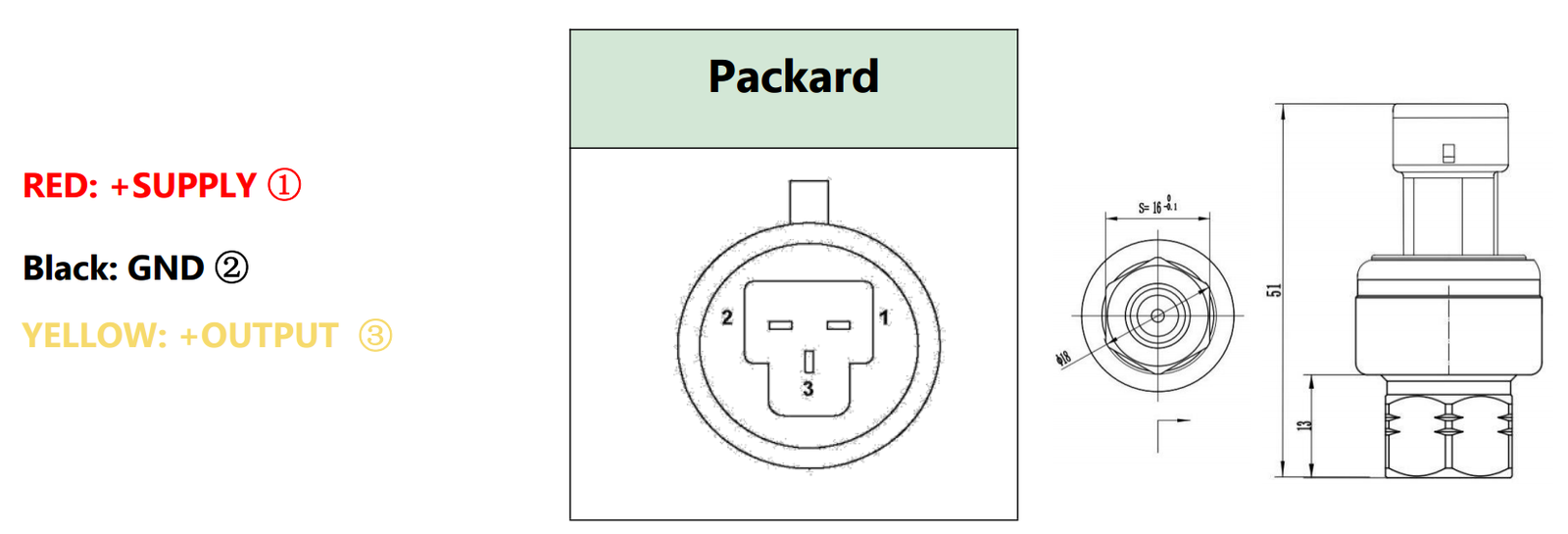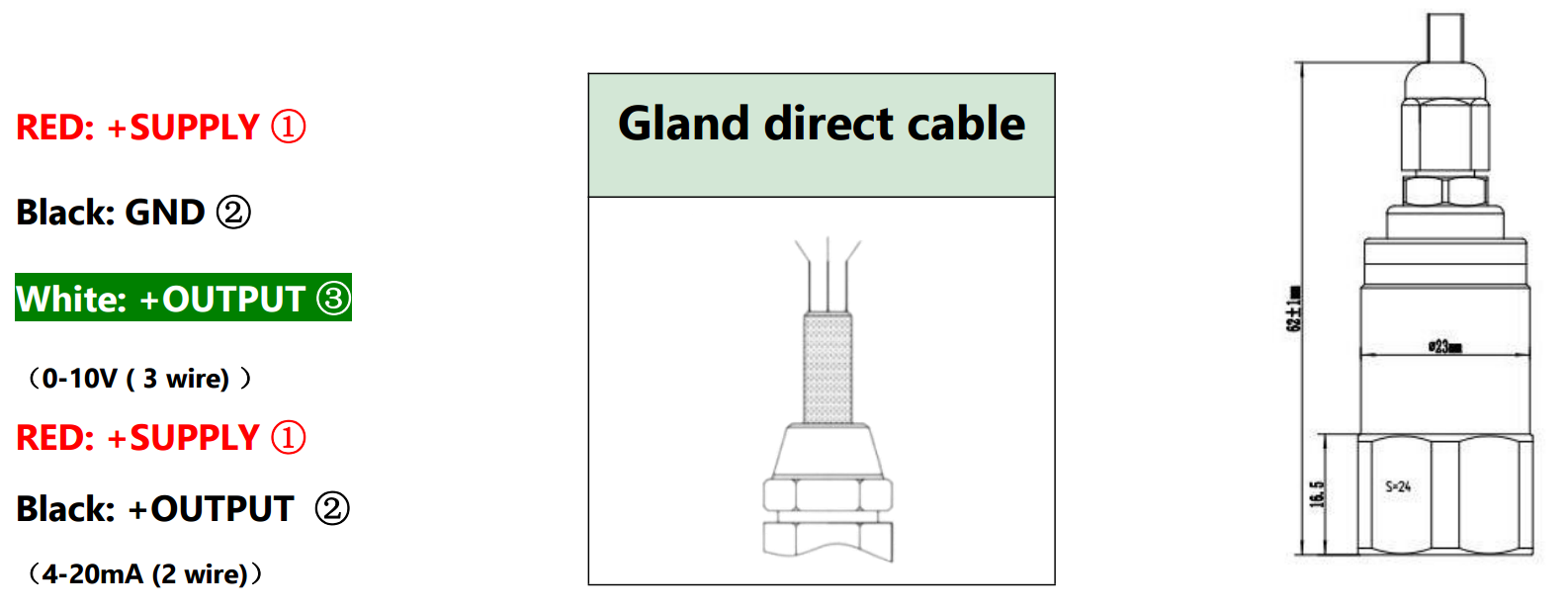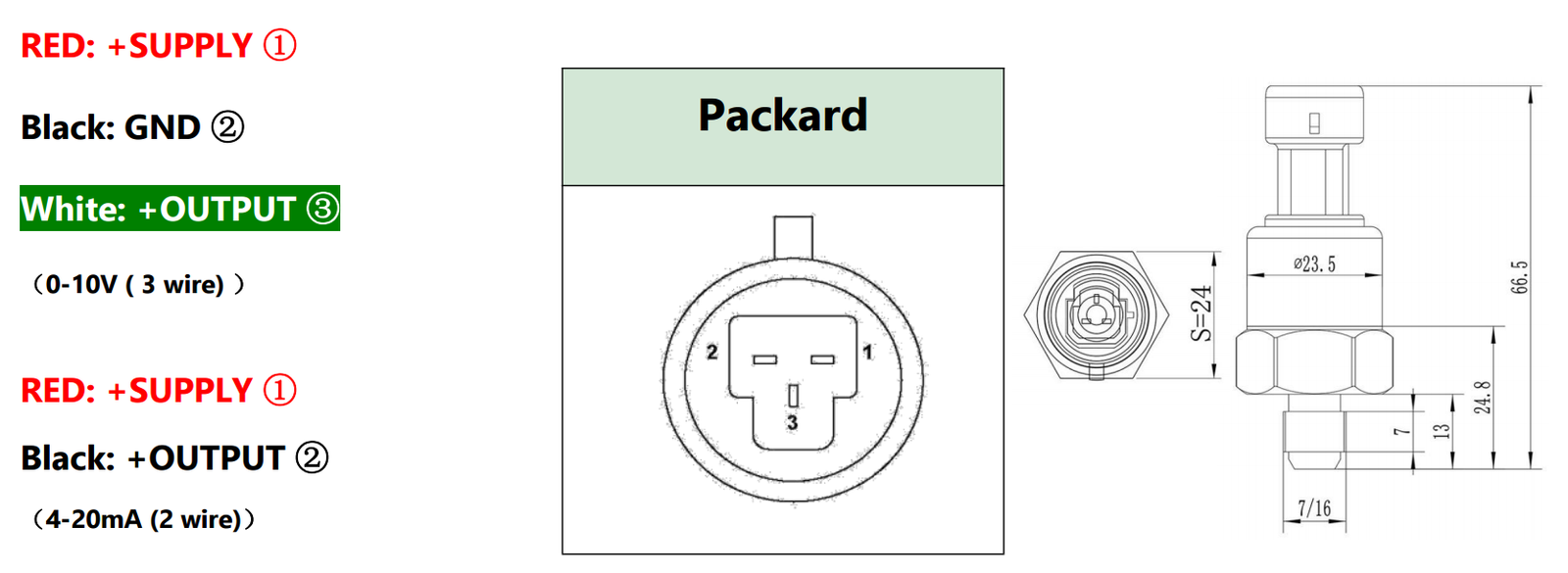$22.98
Pressure range: -1~60 bar (optional)
Accuracy: 1.0%F.S., 1.5%F.S.
Supply voltage: 5-12VDC
Output: 0.5-4.5V, other requirements are on request
Operating temperature: -40~100℃
Compensation temperature: -20~80℃
Operating current: ≤3mA
Temperature drift (zero & sensitivity): ≤±0.03%FS/℃
Long-term stability: ≤±0.2%FS/year
Response time: ≤3ms
Overload pressure: 150%FS
Burst pressure: 300%FS
Cycle life: 500,000 times
Pressure connection: 7/16-20UNF female
Electrical connection: M8 plastic gland cable
Housing material: Copper
Water-proof level: IP65
Explosion-proof level: ExiaⅡCT6
Weight: 0.10kg
Medium: non-corrosive environment
Sensor core: Al2O3-96% ceramic sensor
Cable length: 0.3m for Packard, 0.5m for plastic direct cable by default






1. Prevent the sensor from contacting with corrosive or overheated media, and prevent dross from depositing in the conduit;
2. When measuring liquid pressure, the pressure tap should be opened on the side of the process pipeline to avoid sedimentation and accumulation of slag;
3. When measuring gas pressure, the pressure tap should be opened at the top of the process pipeline, and the transmitter should also be installed on the upper part of the process pipeline, so that the accumulated liquid can be easily injected into the process pipeline;
4. The pressure guiding pipe should be installed in a place with small temperature fluctuations;
5. When measuring steam or other high-temperature media, it is necessary to connect a condenser such as a buffer pipe (coil), and the working temperature of the sensor should not exceed the limit;
6. When freezing occurs in winter, anti-freezing measures must be taken for the transmitter installed outdoors to prevent the liquid in the pressure port from expanding due to freezing and causing damage to the sensor;
7. When measuring the liquid pressure, the installation position of the transmitter should avoid the impact of the liquid (water hammer phenomenon), so as to avoid the sensor from being damaged by over pressure;
8. Do not touch the diaphragm with hard objects on the sensor probe, as it will damage the diaphragm;
9. When wiring, ensure that the pins are defined, and no short circuit occurs, which may easily lead to circuit damage;
10. Do not use a voltage higher than 36V on the sensor, which may easily cause damage. (The 5-12V specification cannot have an instantaneous voltage higher than 16V)
11. Make sure that the electrical plug is installed in place. Pass the cable through the waterproof joint or flexible tube and tighten the sealing nut to prevent rainwater from leaking into the transmitter housing through the cable.
12. When measuring steam or other high-temperature media, in order to connect the transmitter and the pipe together, a heat dissipation pipe should be used, and the pressure on the pipe should be used to transmit to the sensor. When the measured medium is water vapor, an appropriate amount of water should be injected into the cooling pipe to prevent the superheated steam from directly contacting the transmitter and causing damage to the sensor.
13. In the process of pressure transmission, some points should be paid attention to: there should be no air leakage at the connection between the transmitter and the cooling pipe; be careful when opening the valve, so as not to directly impact the measured medium and damage the sensor diaphragm; the pipeline must be kept unblocked, Prevent deposits in the pipe from popping out and damaging the sensor diaphragm.
Subscribe to our newsletter now

+86-19921910756
12th Floor, Santai Building, 137-139 Connaught Road Central, Hong Kong
Mail: info@xdbsensor.com
Copyright © xidibei.com all rights reserved.
| DC5V | DC12V | DC9~36(24)V | DC3.3V |
|---|---|---|---|
| 0.5~4.5V, 1~5V, 0.4-2.4V | 4-20mA, 0-10V, 0.5-4.5V 0-5V, 1-5V | 4-20mA, 0-10V, 0.5-4.5V 0-5V, 1-5V | 0.4~2.4V, I2C |
From a physical perspective, the potential difference that electronic components can achieve when working is limited by the supply voltage. If you try to generate an output signal greater than the supply voltage, it is like asking a container to hold more liquid than its capacity, which is physically impossible.
From the perspective of circuit principles, the supply voltage provides energy and working conditions for each component in the circuit. When trying to generate a signal higher than the supply voltage, the transistors, amplifiers and other components in the circuit cannot provide sufficient gain or energy conversion, and thus such an output cannot be achieved.
In addition, from the perspective of signal integrity and stability, an output signal that exceeds the supply voltage will cause signal distortion, increase noise, and may even damage components in the circuit, affecting the normal operation of the entire system.